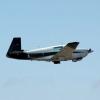M20J down, California
-
Members Online
- TangoTango
- Leavenworth5
- EricJ
- Ventus4
- MikeOH
- bubbagump
- TCC
- exM20K
- Jake@BevanAviation
- gabez
- FoxMike
- Igor_U
- 201Mooniac
- src223
- MDMooney
- redbaron1982
- gear down
- HelofixR
- toto
- Nick Lombard
- Ron McBride
- flyboy0681
- Jim F
- Crawfish
- IvanP
- Scottknoll
- skykrawler
- JeffMirs
- Rmfriday
- BrianL29
- WilliamR
- 1980Mooney
- Mike A
- Pinecone
- rrbeck11
- 00-Negative
- ta2too
- Parker_Woodruff
- Wapst
- VetRepp
- midlifeflyer
- SkyBound


Recommended Posts